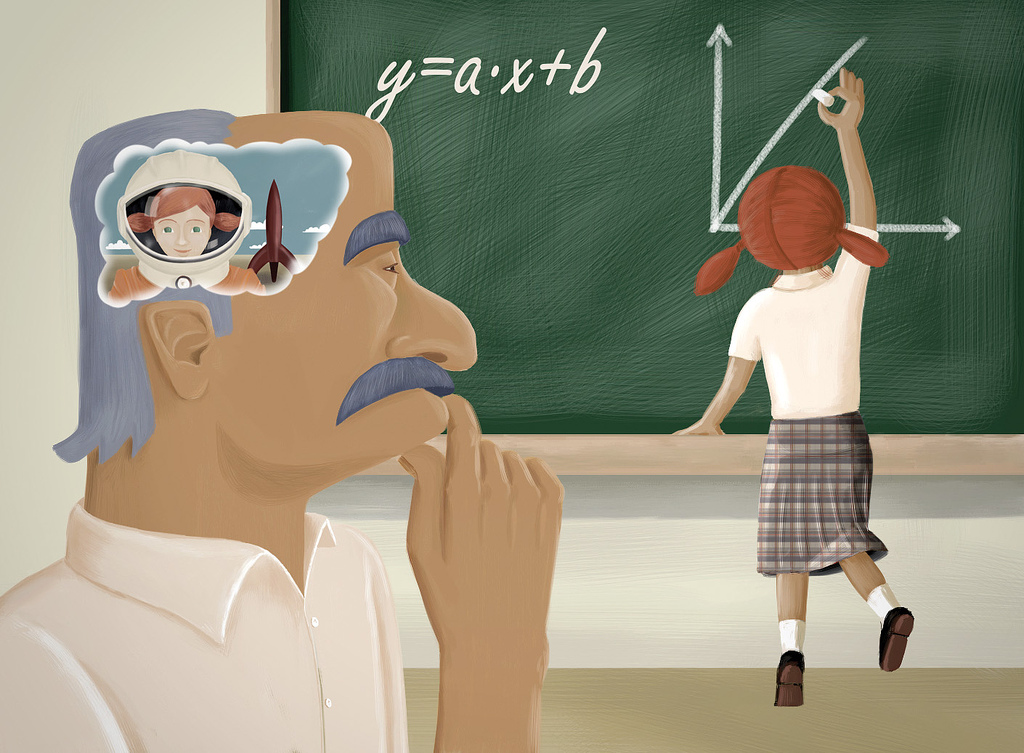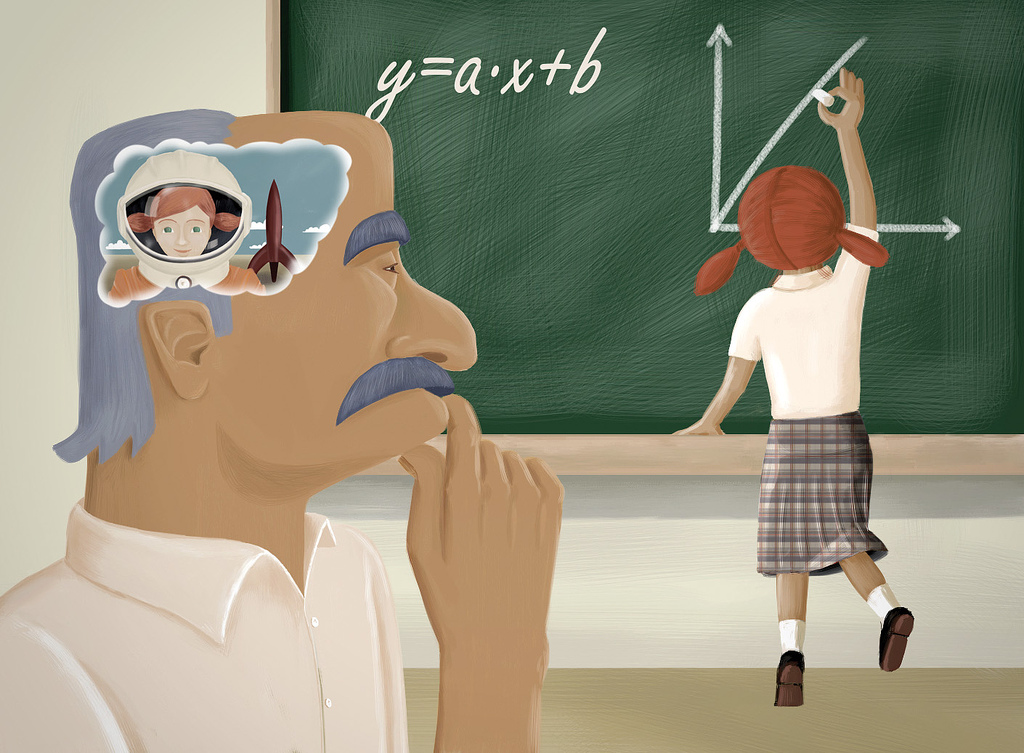[ESP]
👋 ¡Hola, apasionados por el aprendizaje y la superación personal!
Hoy exploramos el fascinante efecto Pigmalión, un fenómeno psicológico que destaca cómo las expectativas que otros tienen sobre nosotros pueden influir en nuestro rendimiento y motivación. Descubriremos cómo aplicar este principio para fomentar el éxito en entornos educativos.

🔍 ¿Qué es el efecto Pigmalión?
El efecto Pigmalión, también conocido como la profecía autocumplida, se refiere a la influencia que tienen las expectativas de una persona sobre el comportamiento y rendimiento de otra.
Origen: Toma su nombre del mito griego de Pigmalión, un escultor que se enamoró de una estatua que había creado, la cual terminó cobrando vida.
Estudio clave: En 1968, Rosenthal y Jacobson demostraron que cuando los docentes tienen altas expectativas sobre un estudiante, este tiende a alcanzar mejores resultados académicos.
🌱 Cómo funciona en la educación
- Expectativas del docente: Los profesores que creen en el potencial de sus alumnos suelen proporcionar más apoyo, atención y oportunidades.
- Autoconfianza del estudiante: Los alumnos que perciben estas expectativas positivas suelen esforzarse más, lo que mejora su rendimiento.
- Ciclo de retroalimentación positiva: El éxito inicial refuerza la confianza y motiva tanto al alumno como al docente.
🌟 Aplicaciones del efecto Pigmalión en el aula
Establecer expectativas positivas:
Evita etiquetar a los estudiantes como "buenos" o "malos".
Enfócate en sus fortalezas y potencial de mejora.
Fomentar una comunicación efectiva:
Usa palabras alentadoras que refuercen la confianza en sus habilidades.
Reconoce los logros, por pequeños que sean.
Adaptar la enseñanza:
Ofrece desafíos apropiados al nivel del estudiante para estimular su progreso.
Proporciona retroalimentación constructiva y soluciones claras para mejorar.
Crear un entorno motivador:
Promueve el aprendizaje colaborativo y la empatía entre compañeros.
Celebra el esfuerzo tanto como el logro.
🤔 Reflexión: ¿Es posible revertir un efecto Pigmalión negativo?
Sí, identificando y desafiando las expectativas limitantes:
- Autocuestionamiento: Analiza si tus percepciones sobre un estudiante están basadas en hechos o prejuicios.
- Reajustar las expectativas: Cambia el enfoque hacia las capacidades y esfuerzos del alumno.
- Brindar oportunidades: Ofrece herramientas y experiencias que permitan al estudiante demostrar su potencial.
📢 ¡Gracias por acompañarme en este viaje por la psicología educativa! 📘
Espero que esta introducción al efecto Pigmalión te inspire a aplicar expectativas positivas en tu entorno. Si tienes ideas o experiencias relacionadas con este tema, ¡compártelas en los comentarios! 📝
🔔 No te pierdas nuestras próximas publicaciones, donde seguiremos explorando temas fascinantes sobre la motivación y el aprendizaje. 🌐
🤝 Únete a nuestra comunidad para compartir estrategias educativas y aprender juntos. 💬
📷 Comparte tus ideas: ¿Cómo crees que las expectativas pueden moldear el éxito de los estudiantes? 🌟
🚀✨ ¡Hasta la próxima, sigue transformando vidas a través del poder de la educación! 🎓
[ENG]
👋 Hello, passionate about learning and self-improvement!
Today we explore the fascinating Pygmalion effect, a psychological phenomenon that highlights how the expectations others have of us can influence our performance and motivation. We will discover how to apply this principle to foster success in educational settings.

🔍 What is the Pygmalion effect?
The Pygmalion effect, also known as the self-fulfilling prophecy, refers to the influence that one person's expectations have on another person's behavior and performance.
Origin: Named after the Greek myth of Pygmalion, a sculptor who fell in love with a statue he created, which ended up coming to life.
Key Study: In 1968, Rosenthal and Jacobson showed that when teachers have high expectations for a student, he or she tends to achieve better academic results.
🌱 How it works in education
- Teacher expectations: Teachers who believe in their students' potential tend to provide more support, attention, and opportunities.
- Student self-confidence: Students who perceive these positive expectations tend to try harder, which improves their performance.
- Positive feedback loop: Initial success reinforces confidence and motivates both the student and the teacher.
🌟 Applications of the Pygmalion effect in the classroom
Set positive expectations:
Avoid labeling students as "good" or "bad."
Focus on their strengths and potential for improvement.
Encourage effective communication:
Use encouraging words that reinforce confidence in their abilities.
Recognize achievements, no matter how small.
Adapt teaching:
Offer challenges appropriate to the student's level to stimulate their progress.
Provide constructive feedback and clear solutions for improvement.
Create a motivating environment:
Promote collaborative learning and empathy among peers.
Celebrate effort as much as achievement.
🤔 Reflection: Is it possible to reverse a negative Pygmalion effect?
Yes, by identifying and challenging limiting expectations:
- Self-questioning: Analyze whether your perceptions about a student are based on facts or prejudices.
- Reset expectations: Shift the focus to the student's capabilities and efforts.
- Provide opportunities: Offer tools and experiences that allow the student to demonstrate their potential.
📢 Thank you for joining me on this journey through educational psychology! 📘
I hope this introduction to the Pygmalion Effect inspires you to apply positive expectations in your environment. If you have ideas or experiences related to this topic, please share them in the comments! 📝
🔔 Don't miss our upcoming posts, where we will continue to explore fascinating topics about motivation and learning. 🌐
🤝 Join our community to share educational strategies and learn together. 💬
📷 Share your thoughts: How do you think expectations can shape student success? 🌟
🚀✨ Until next time, keep transforming lives through the power of education! 🎓